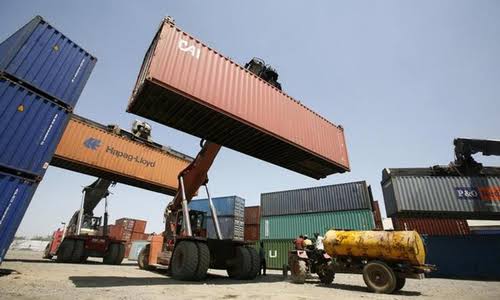Massive Pakistani Trade Imbalance In last Ten Months

According to a Western Global Financial Literacy Survey 2015 only 26 per cent of the adults in Pakistan are financially literate. This, limited financial literacy in Pakistan is concerning for foreign investors as it has exacerbated the informality challenge in the country.
In its recent ‘Pakistan Development Update’, the World Bank has highlighted the structural weaknesses of Pakistan’s economy which include low investment, low exports, and a low productivity growth cycle. Further, high domestic demand pressures and rising global commodity prices would lead to double-digit inflation in the country.
Moreover, the growth momentum is not expected to pick up in Pakistan in the near future as a sharp spike in the import bill would also impact the Pakistani Rupee adversely. The World Bank report cites the financial sector’s inadequacy as one of the reasons for this low growth.
Pakistan’s trade deficit swelled to a massive USD 39.3 billion in the last 10 months of the fiscal year 2021-22, putting pressure on the country’s foreign currency reserves in a sign of the worsening economic woes of the country, a media report said.
The country’s trade imbalance was recorded at USD 39.3 billion from July to April period of the year 2021-22 as compared to USD 23.8 billion in the corresponding period of the previous year, showing a massive growth of 64.8 per cent, according to the data released by the Pakistan Bureau of Statistics (PBS), The Nation reported.
Pakistan’s imports have gone up by 46.41 per cent to USD 65.5 billion in July to March period of FY 2021-22 from USD 44.7 billion in the same period of the previous year, the report said.
Meanwhile, the country’s exports were recorded at USD 26.2 billion from July to April period of the year 2021-22 as compared to USD 20.9 billion in the corresponding period of the previous year, showing a growth of 25.5 per cent.
The currency reserves are facing pressure on the back of increased imports, fluctuating remittances from the Pakistani diaspora, mostly in the gulf, and geopolitical risks.
Imports of goods and services may continue to show a rising trend mainly due to the rise in international commodities prices, the report said.
Taking these factors into account, as well as its other components, the country’s Current Account Deficit (CAD) is expected to stay around USD 1 billion in the coming months, the report added.



